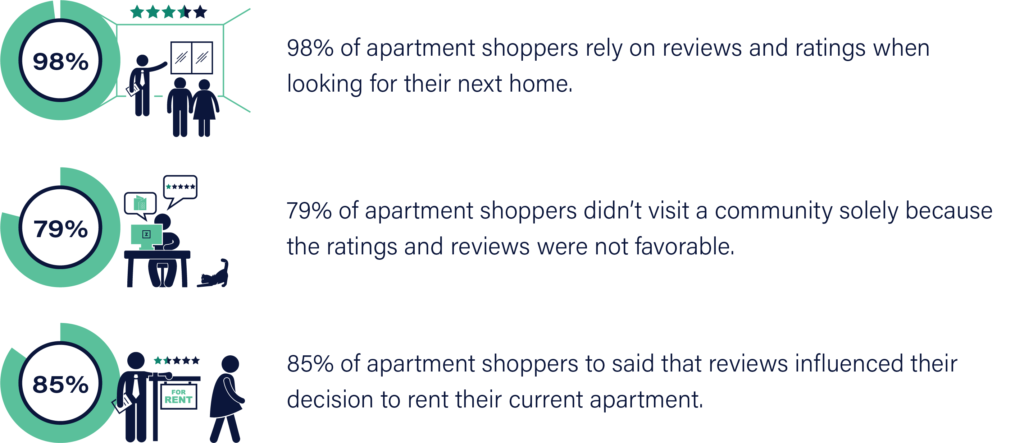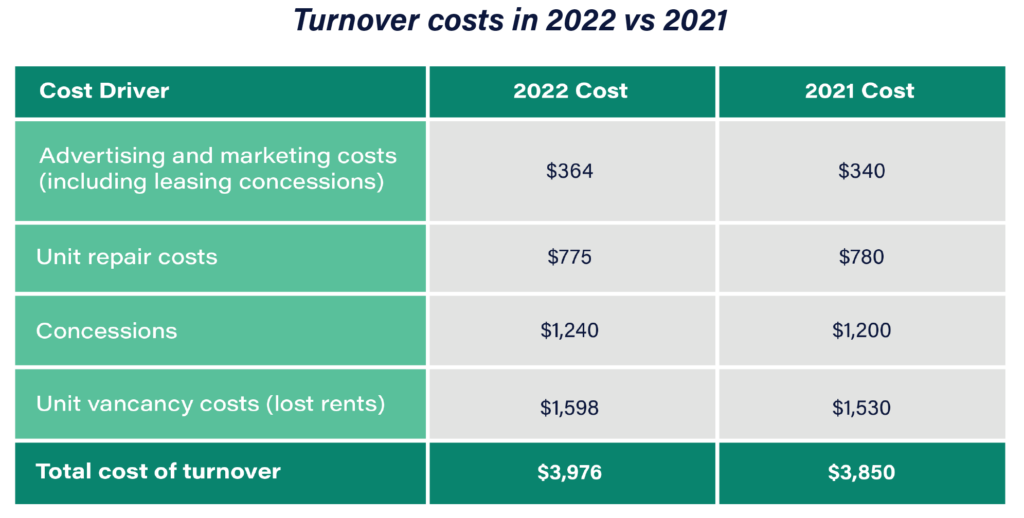How to increase resident retention by improving your multifamily living experience
Multifamily communities that implement these resident experience strategies significantly boost resident retention rates.
Resident experience is an important selling point of multifamily communities and a major factor influencing resident retention. If your communities are struggling with retention, it may be time to re-examine the experience you are creating for residents.
Renters will always want a nice apartment unit at a fair price. But now, their expectations go beyond the four walls in which they live. Now, they’re also interested in the lifestyle the community offers. For example, can your community enhance their life in any way? Will it make their everyday life simpler?
Resident experience also goes beyond the feel-good aspects of a community. It includes how renters interact with you and how they conduct apartment-related tasks. Paying rent, granting access to visitors, reserving amenities, all shape the resident experience. You might not think these have much impact on resident retention for multifamily. But anyone who’s ever lived in an apartment community will attest that these tasks all come with some level of friction.
Modern renters value time and convenience, and when too many annoyances pile up, retention can suffer. Now, residents increasingly expect service-oriented, tech-enabled experiences within their community.
Resident experience management impacts retention
Resident Experience Management is the process of improving renter touchpoints to deliver remarkable living experiences. Multifamily communities are increasingly making it a priority because it keeps resident retention rates high.
We know that companies have differing ideas on what resident experience means and how to deliver living experiences that retain residents. So we wanted to find out what the consensus was on this topic and commissioned a research study on it.


RENTER INSIGHTS
2025 Resident Experience Management Report
Building on five years of insights from property managers, our latest report includes direct feedback from renters. We’ve gathered perspectives from over 1,000 renters and 600 multifamily companies to provide a dual perspective on the current state of the multifamily resident experience.
Aside from learning how apartment operators are managing resident experience, our report also breaks down why it’s so important. Here are some ways your community’s living experience impacts resident retention.
Reputation impacts resident retention rates for multifamily
When people have been treated exceptionally well by a business, they like to talk about it. And, the same goes when they’ve had a bad experience. This is a huge reason to prioritize resident experience management.
The impact starts when renters are on the hunt for an apartment. They can visit a community and see for themselves just how nice your units are. But what they can’t gauge is the living experience. So, they turn to your former and current renters for that information.
Before prospects tour your community, it’s almost certain they’ve read up on what others have to say about it. According to a study by Apartments.com, 98% of apartment shoppers rely on reviews and ratings when looking for their next home. And, they really take to heart what those reviews reveal.
Negative resident reviews scare away prospects – but positive ones boost occupancy rates
If your community reviews are negative, they may never come through the door. Seventy-nine percent of respondents to NMHC’s Apartment Resident Preferences Report said that during an apartment hunt, they didn’t visit a community solely because the ratings and reviews were not favorable.
The good news is that positive reviews linger in the minds of apartment hunters, too. Eighty-five percent of respondents to NMHC’s survey said that reviews influenced their decision to rent their current apartment.
How resident reviews impact occupancy

It’s a full-circle process. Residents who are happy serve as your advocates by posting good reviews. Those stellar reviews pull in prospective renters and influence their decision to rent. Conversely, residents who have not had a pleasant experience leave reviews that scare away potential renters.
Action Items
Increase resident retention for multifamily and lower turnover costs by improving your community experience
Believing in the importance of the resident experience and delivering on it is a tough balancing act. After all, community managers have plenty of operational tasks to juggle on a daily basis. It’s easy for the operational aspects of running a community to overshadow resident retention-focused initiatives.
But that mindset brings consequences because the turnover that stems from underwhelmed residents creates a constant cycle of additional work that falls on your on-site teams. There are financial impacts, too. For example, the average turnover cost for one unit is about $4,000, which is slightly more than it was in 2021. Here’s how it all adds up.
Average resident turnover costs
 The impact of turnover is steep. Especially if you think about the amount of time it takes to recover the costs from a unit turn. Even if you raise the rent price, it still takes well over a year to recoup those costs! Here’s why.
The impact of turnover is steep. Especially if you think about the amount of time it takes to recover the costs from a unit turn. Even if you raise the rent price, it still takes well over a year to recoup those costs! Here’s why.
 Conversely, communities that make an impact on renters see reduced turnover and have an opportunity to thrive. According to Forbes, “Seven in 10 U.S. consumers say they’ve spent more money to do business with a company that delivers great service.” In terms of multifamily companies, this translates to residents staying in their community longer. Because there’s nowhere else where great service is more appreciated than within the place you call home.
Conversely, communities that make an impact on renters see reduced turnover and have an opportunity to thrive. According to Forbes, “Seven in 10 U.S. consumers say they’ve spent more money to do business with a company that delivers great service.” In terms of multifamily companies, this translates to residents staying in their community longer. Because there’s nowhere else where great service is more appreciated than within the place you call home.

Get more resident retention for multifamily strategies that help lower turnover
Want more resident retention strategies? Download our latest Resident Experience Management Report where we reveal how apartment operators feel about resident experience management. We also offer tips to improve the community living experience and help you lower resident turnover.
Increase resident retention with Zego
With Zego, you can not only boost resident retention but also improve NOI. Request a demo and see how you can elevate your resident experience, reduce turnover costs, and take your multifamily community to new heights.